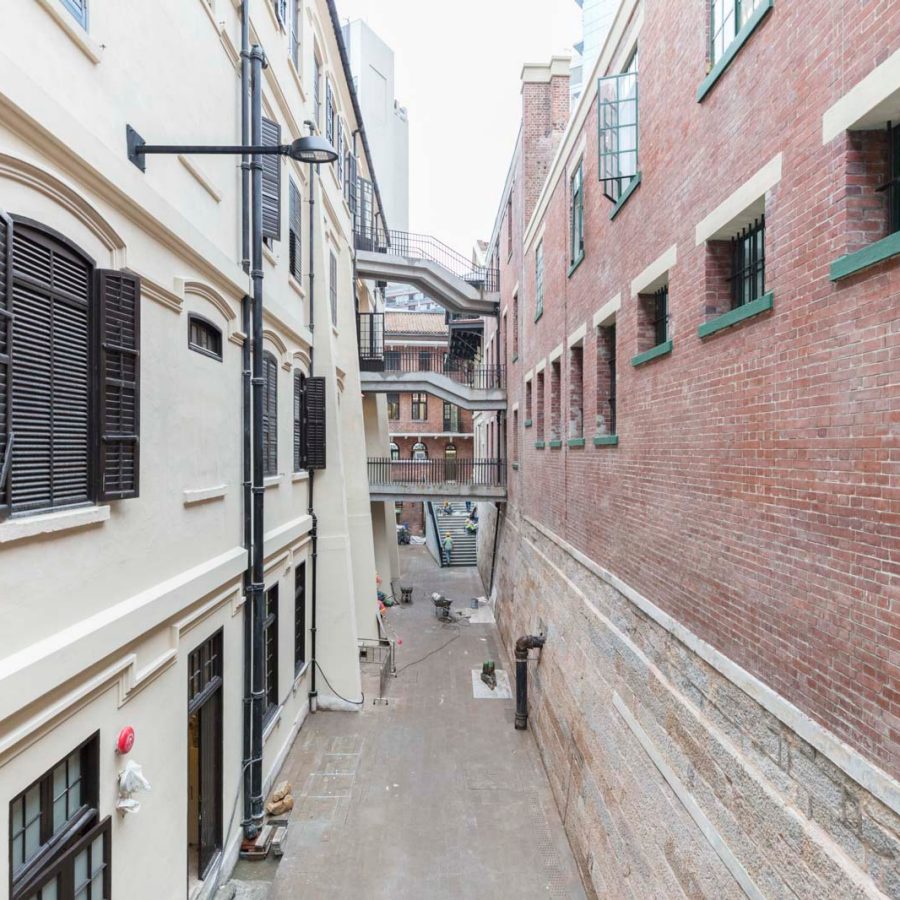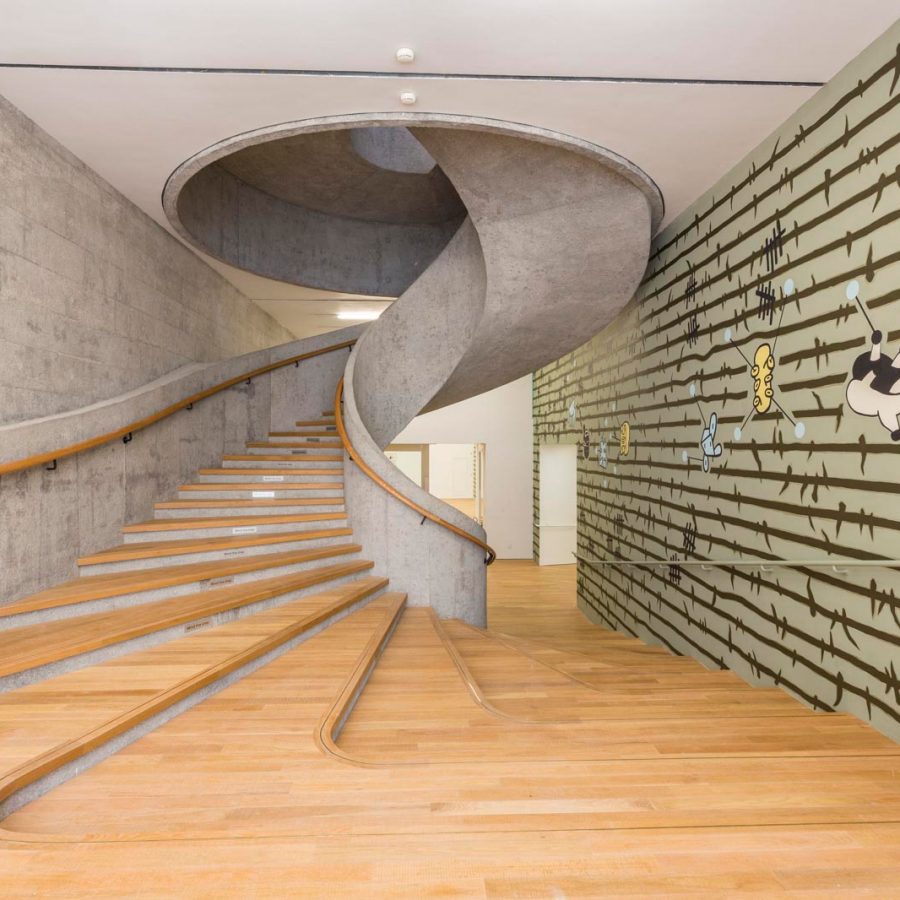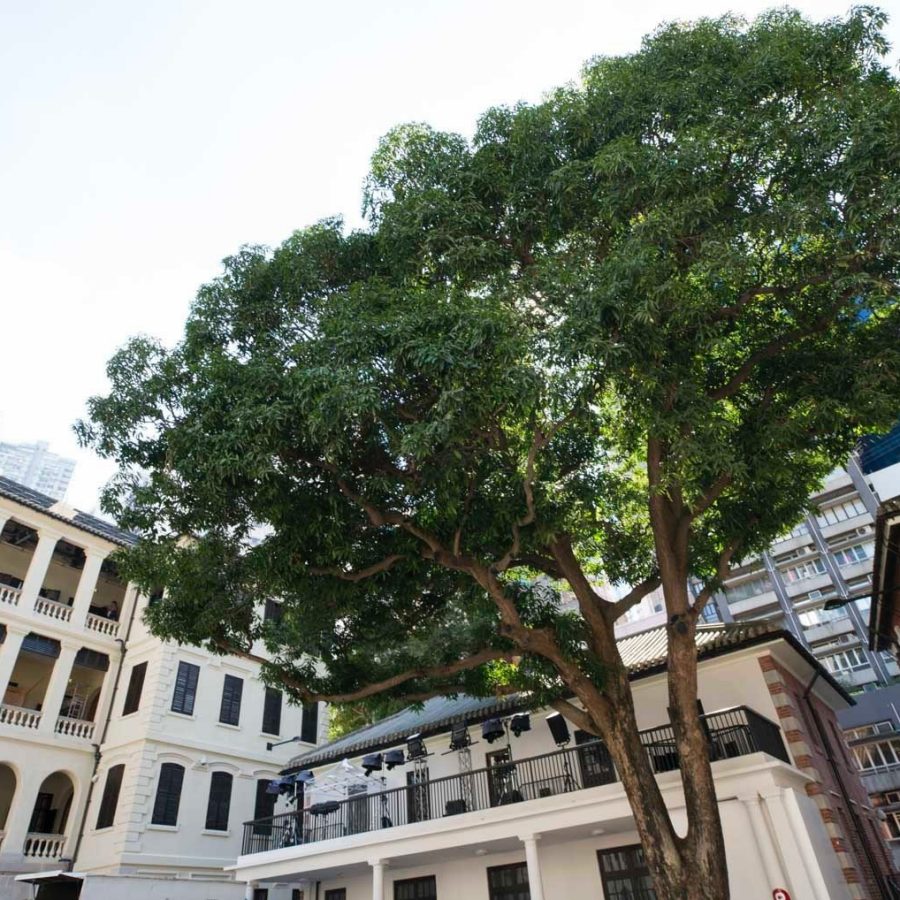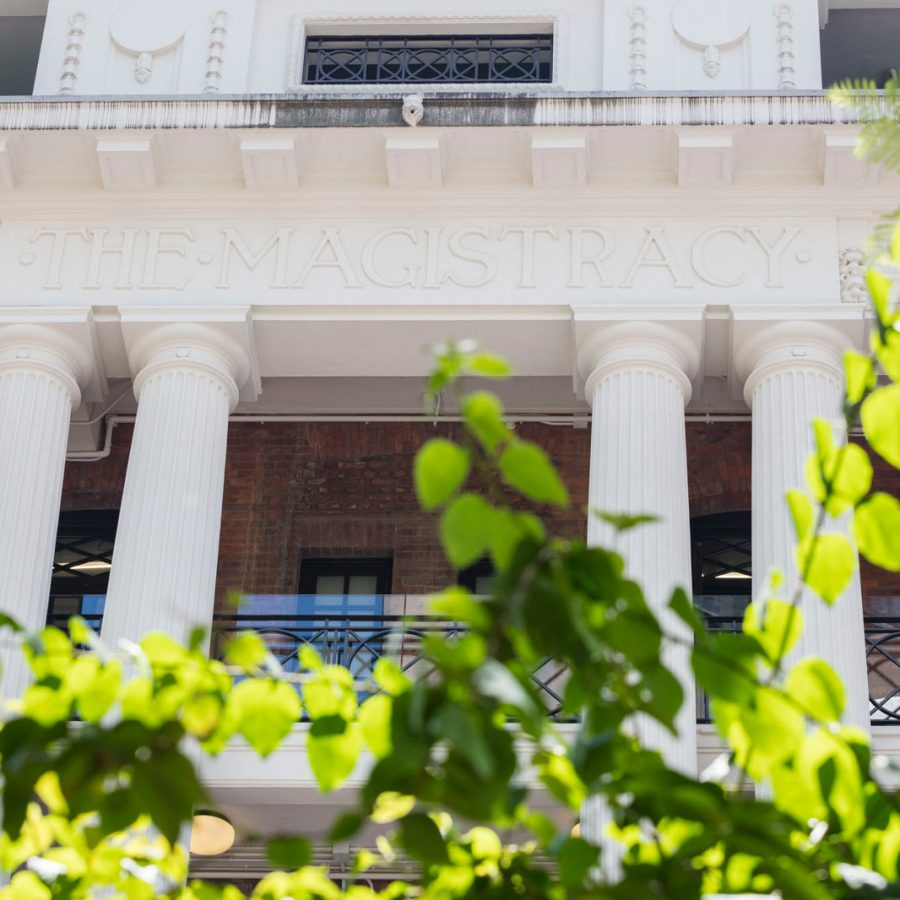8 great finds at Tai Kwun, Hong Kong's new art and heritage space

1) Tai Kwun’s oldest building
The neo-Georgian D Hall dates from 1858, and is the oldest datable building in the Tai Kwun complex. It was initially far more extensive but part of it has been knocked down over time. It has served as a prison block and a hospital, and now is home to a heritage storytelling space.

Photo: Mike Pickles
2) Bricks in aluminium
You won’t miss the aluminium cladding, recycled from alloy wheels, that has been added to the exterior of JC Cube and JC Contemporary art galleries. But notice how the original brickwork of the complex has inspired the structure of these modern additions, and the continuity between old and new becomes apparent.

Photo: Mike Pickles
3) Ho Chi Minh’s exercise yard
Ho Chi Minh was confined in Victoria Prison from 1931 to 1933, and his diaries describe being allowed out to exercise for 15 minutes a day in a narrow courtyard surrounded by walls, feeling like he was at the bottom of a well. The description best matches the yard between A and B Halls, and work is currently under way to add barbed wire to the top of the surrounding walls to recreate Ho’s descriptions even more closely.

Photo: Mike Pickles
4) Life behind bars
Victoria Prison was Hong Kong’s first and longest-running prison, operating from 1841 to 2006. The cells in B Hall have been left intact. There’s no aircon, and artistic installations mimic the shouts, clatters and monotony of daily prison life to produce a walk-through both sobering and engaging.

Photo: Mike Pickles
5) Spiral staircase
This four-storey concrete spiral staircase that winds up through the galleries is a sculptural work of art in its own right. Created by acclaimed architects Herzog & de Meuron, this showpiece stairwell aims to encapsulate Tai Kwun’s modern outlook amid its historic settings.

Photo: Mike Pickles
6) A legendary mango tree
Many police officers believed if the giant mango tree in the parade ground courtyard bore plenty of fruit the year would be filled with promotions. However, others felt that lots of fruit was a bad omen. Some sources posit that Indian police officers introduced the mango to their Hong Kong counterparts.

Photo: Mike Pickles
7) Wall perfection
Renovations to the facade of the 99-year-old Police Headquarters called for thousands of new red bricks. So the heritage team traced the same British brickworks that made the originals a century ago and commissioned it to custom produce 15,000 red bricks. A real victory for brick completists everywhere.
8) The Catholic mural
A colourful mural depicting a cross potent (a common motif in Roman Catholicism) was uncovered during renovations at the entrance to the superintendent’s house, which had been converted into a chapel. It has now been restored for the public to examine.
Hero illustration: Lok Wong
Hong Kong travel information
- China – the Chinese Mainland, Hong Kong SAR, Macao SAR and Taiwan Region
- Hong Kong SAR - English
- Chinese Mainland (China) - English
- Taiwan, China - English
- 香港特別行政區 - 繁體中文
- 中国內地 - 简体中文
- 中國台灣 - 繁體中文
- Africa
- South Africa - English
- Asia
- Bangladesh - English
- Korea - English
- Singapore - English
- Cambodia - English
- 한국 - 한국어
- Sri Lanka - English
- India - English
- Malaysia - English
- Thailand - English
- Indonesia - English
- Maldives - English
- ประเทศไทย - ภาษาไทย
- Indonesia - Bahasa Indonesia
- Myanmar - English
- Vietnam - English
- Japan - English
- Nepal - English
- Việt Nam - tiếng Việt
- 日本 - 日本語
- Philippines - English
- Australasia
- Australia - English
- New Zealand - English








